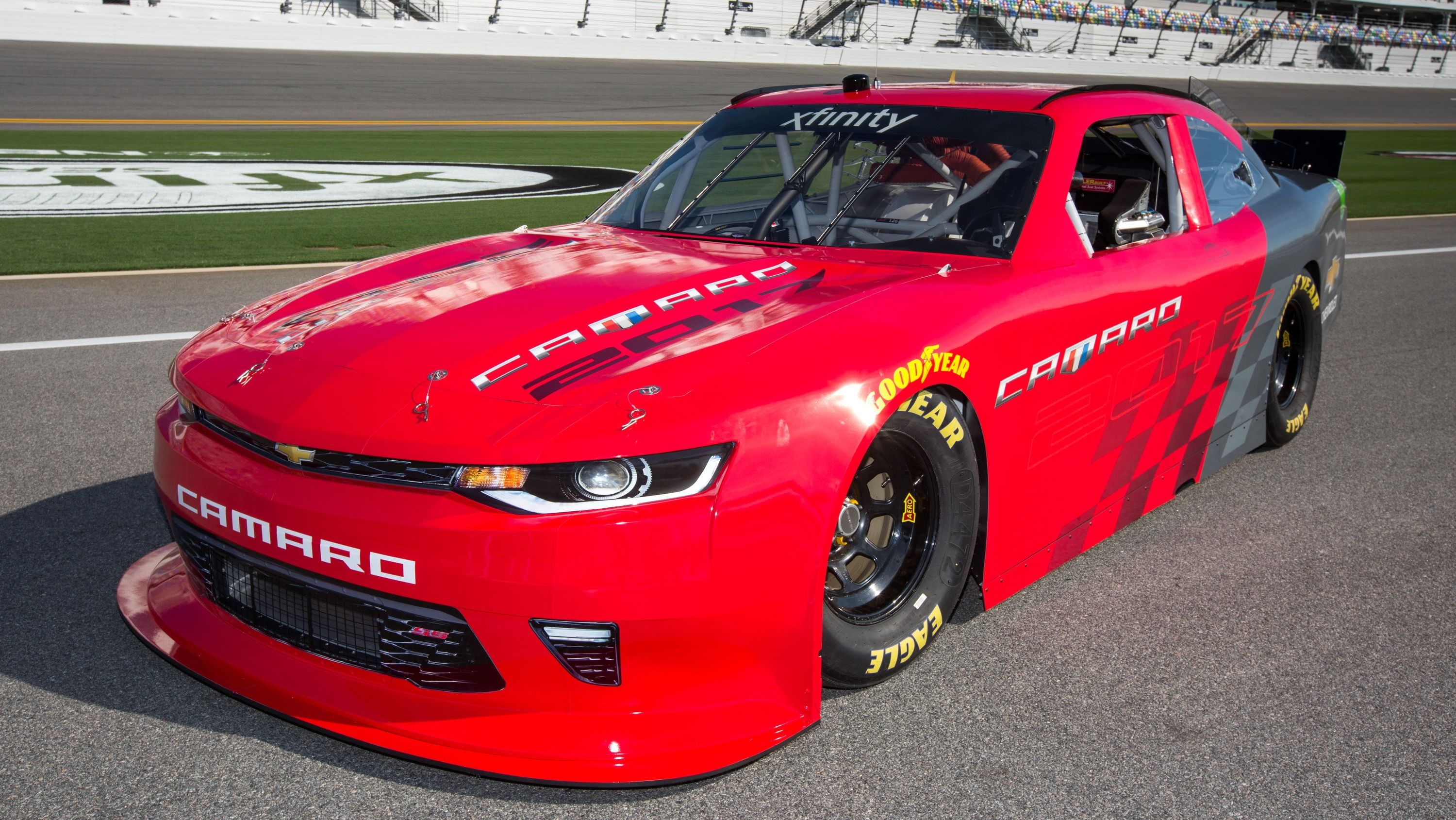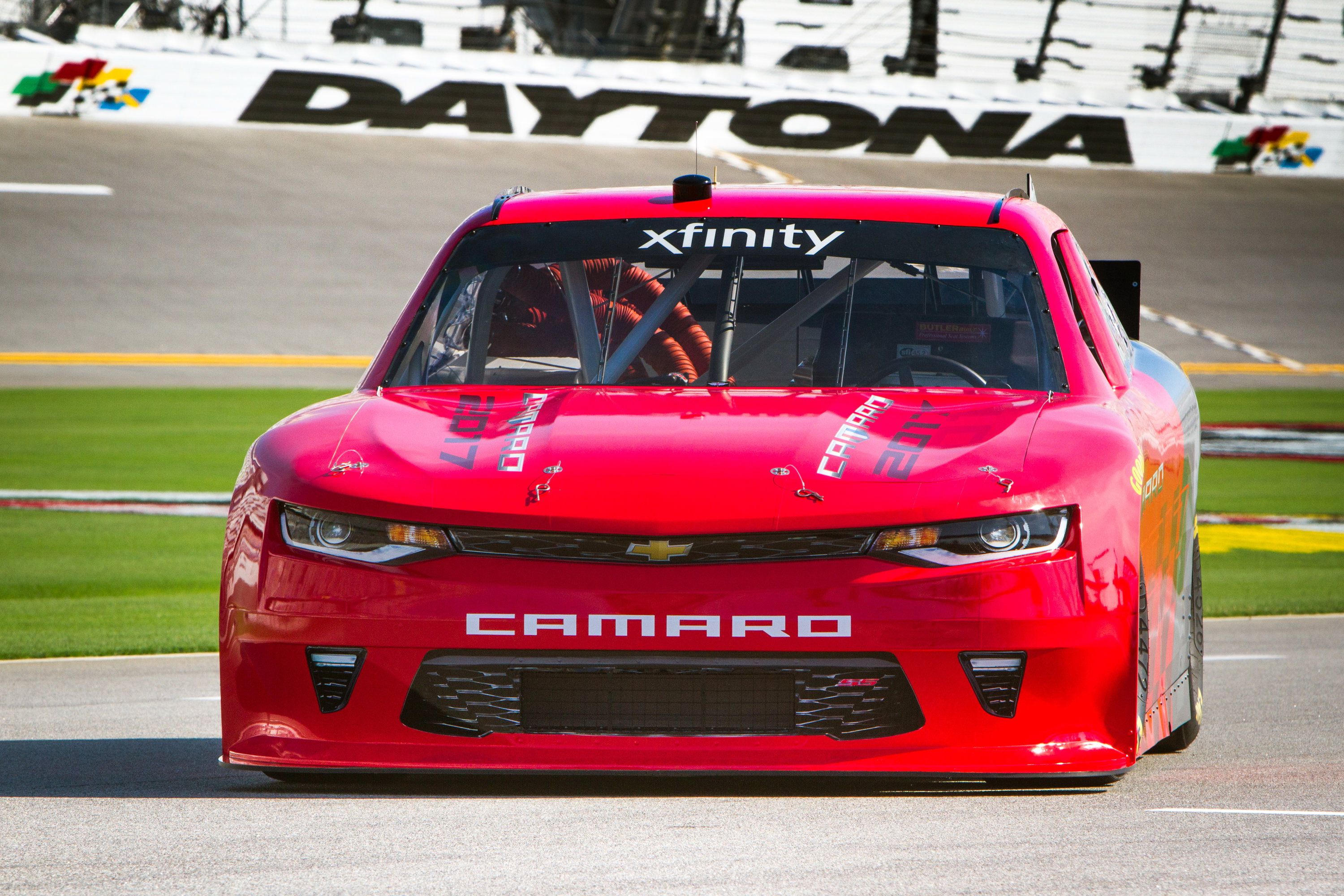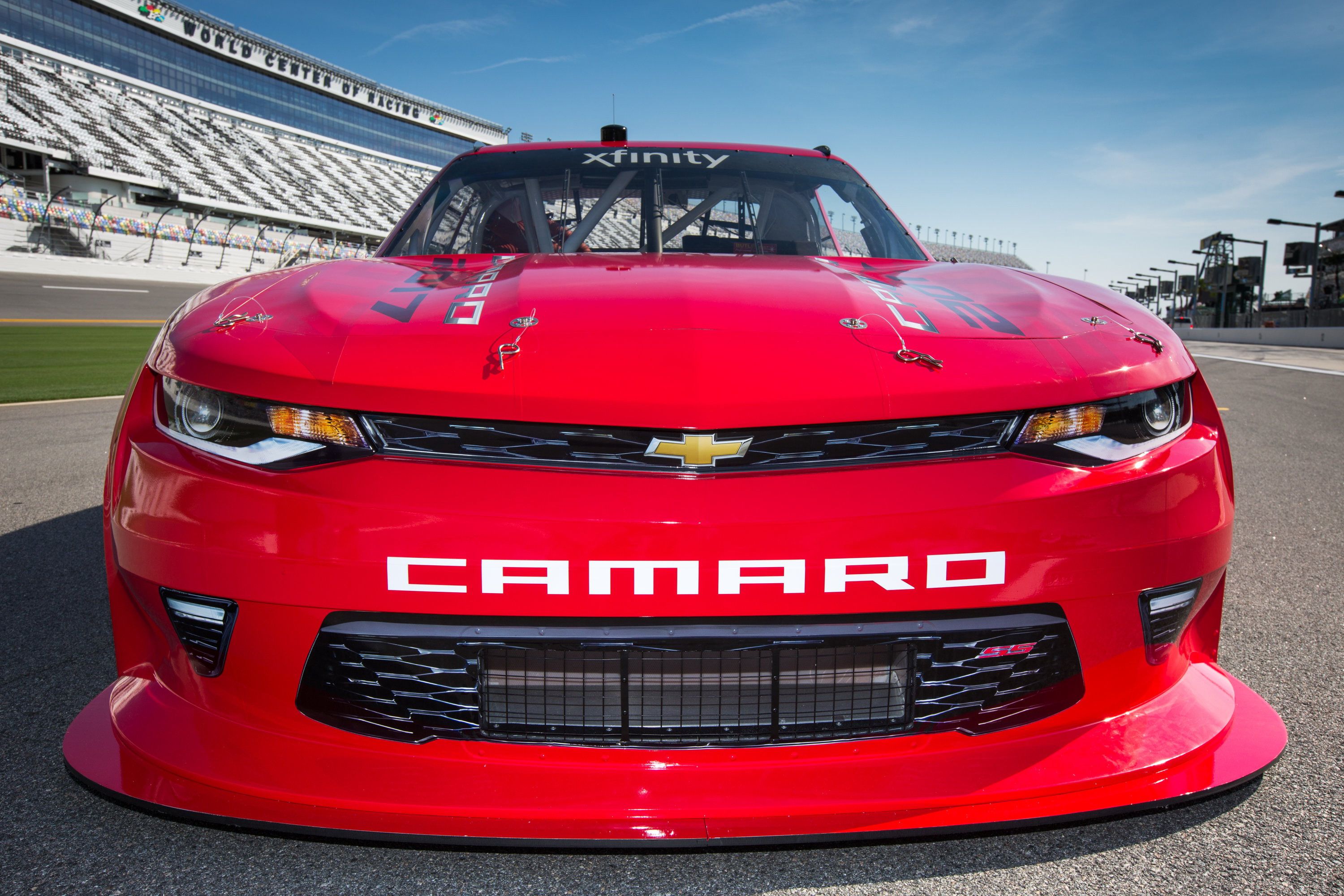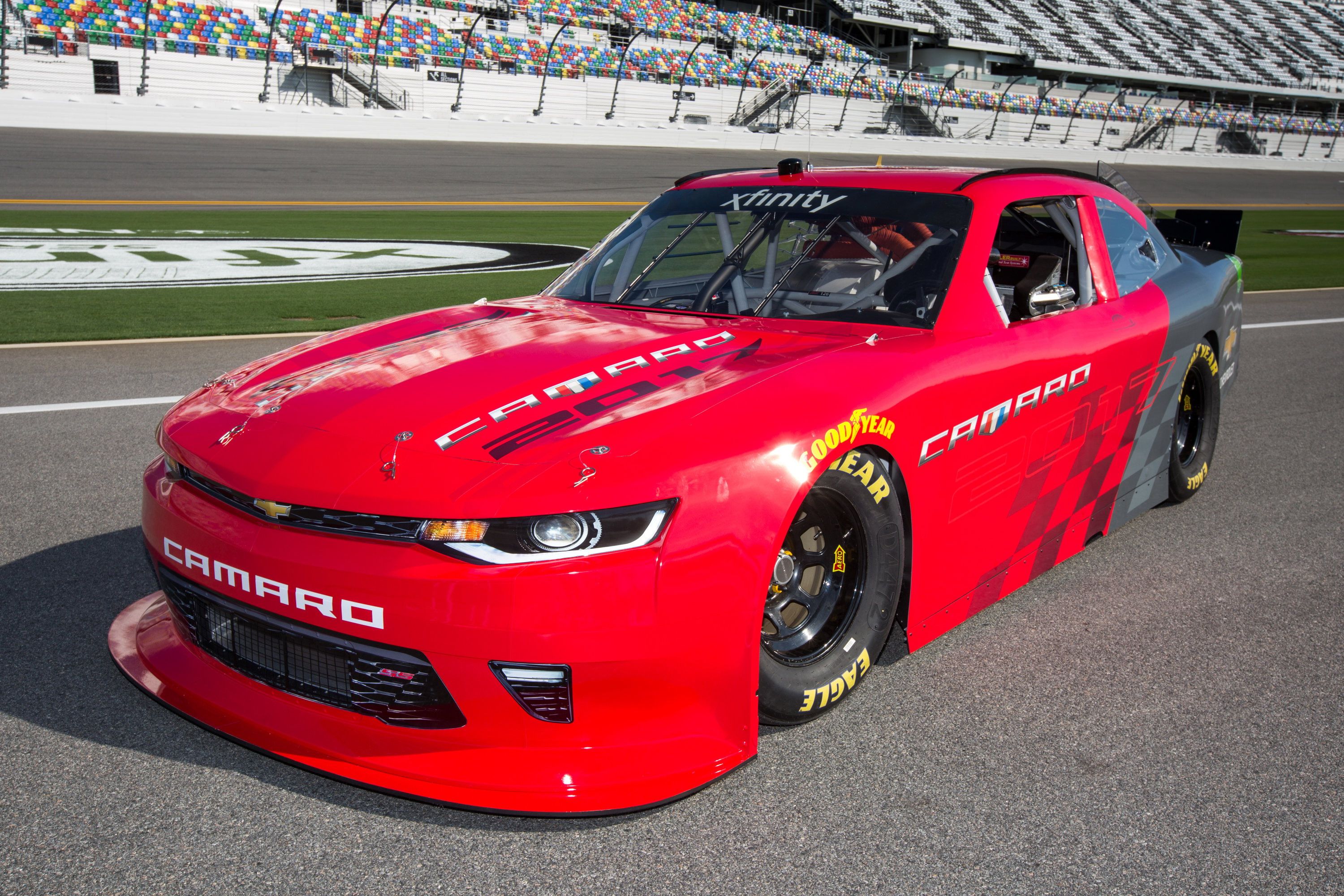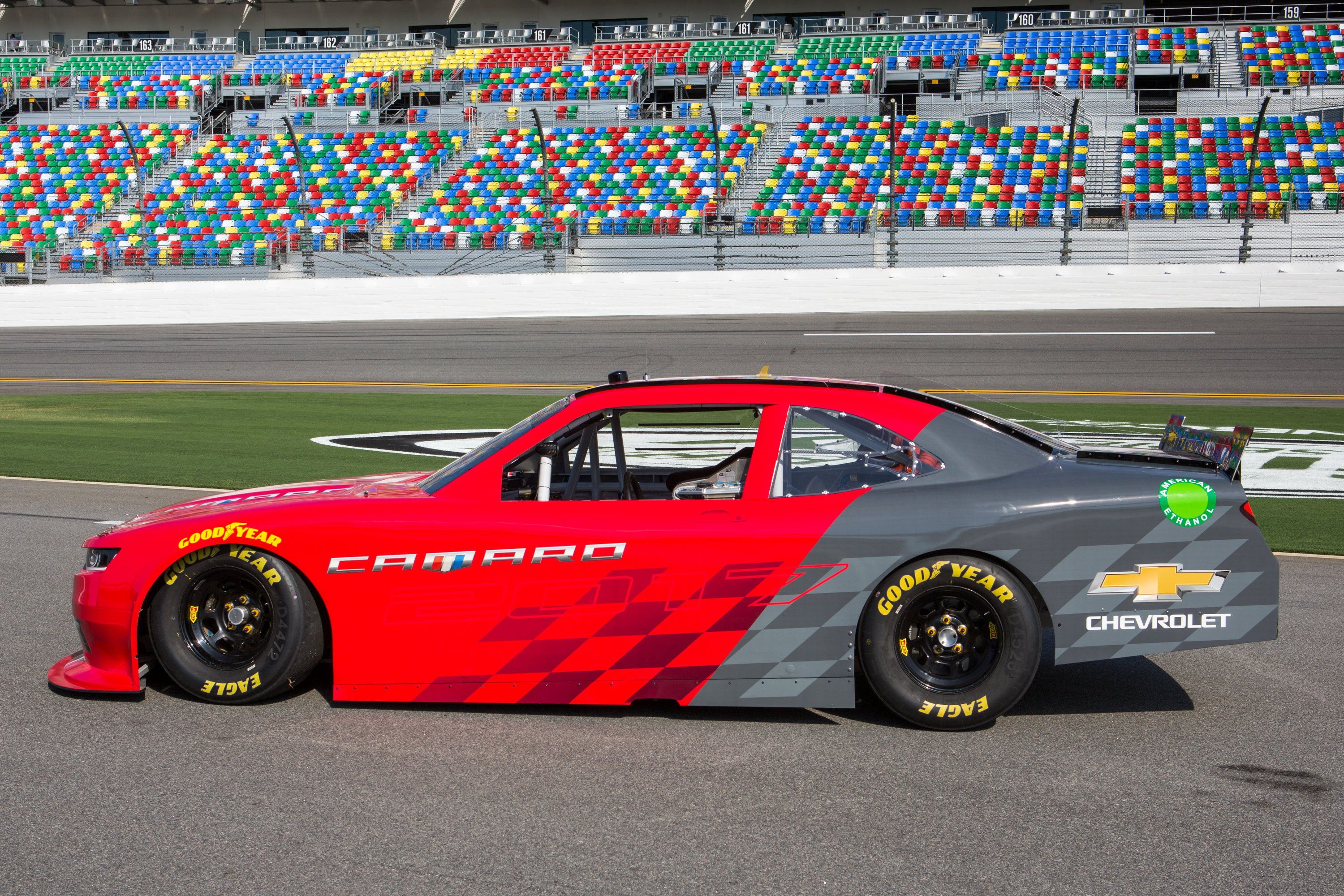Chevrolet introduced the sixth-generation Camaro in 2015, replacing the model it has been selling with great success since 2009. A significant departure from its predecessor, the sixth-gen Camaro features a new, evolutionary design, but it is also lighter and slightly smaller. Unlike its predecessor, the new Camaro is more of a sports coupe rather than a traditional pony car. Engine-wise, it retained the V-6 and V-8, both in upgraded form, but it also gained a four-cylinder unit, the first for a Camaro since the early 1990s.
Having already spawned a race-spec COPO version, the sixth-gen Camaro has also been used as a base for a new NASCAR vehicle. Much like its predecessor, the NASCAR-spec Camaro will be raced in the Xfinity Series. For those of you who don't watch a lot of motorsport, the Xfinity Series, previously known as the Nationwide Series, is considered a proving ground for drivers who wish to step up to NASCAR's top-level competition, the Sprint Cup Series.
The new race car will run its maiden season in 2017, when it will replace the vehicle based on the previous-generation Camaro. Chevrolet has been using the Camaro in NASCAR since 2013. Previously, GM fielded race cars based on the Monte Carlo and Impala in the Nationwide Series.
The Camaro won the series in 2015 and 2014, after placing third in the championship in 2013. As of June 2016, Chevrolet is second to Toyota in the manufacturers' championship. Overall, the Camaro has scored 35 wins since 2013.
Continue reading to learn more about the Chevrolet Camaro NASCAR Xfinity race car.
2017 Chevrolet Camaro NASCAR Xfinity Race Car
- Make: Array
- Model: 2017 Chevrolet Camaro NASCAR Xfinity Race Car
- [do not use] Vehicle Model: Array
What makes the Chevrolet Camaro NASCAR Xfinity race car special
As with most NASCAR racers, this Camaro has very little in common with the car it is "based" on. Aside from the painted headlamps, taillights and the overall shape of the engine hood, the race car features the standardized NASCAR design. The front bumper is only a couple of inches above the ground, the side panels are almost featureless, while the rear overhang is significantly longer than a road car's and stands high above the ground. Even the roof shape is different, with a taller windscreen and larger quarter windows. Naturally, the Camaro NASCAR racer rides on wide and slick GoodYear Eagle tires.
But don't let the not-so-exciting exterior fool you. The body has been tested for months in the wind tunnel in order to achieve the best aerodynamics.
The same NASCAR standards apply on the inside, where the race car bears very little resemblance with the road-going model. Highlights include a revised dashboard with race-specific displays, a bolstered race-spec driver seat, and a full roll-cage.
Chevy had nothing to say about the engine, but that's far from surprising given that they are regulated by NASCAR. Under current regulations, all powerplants must be naturally aspirated, 5.8-liter, pushrod, V-8s and mate to four-speed manual transmissions. Output is usually at least 450 horsepower, while torque is rated at around 520 pound-feet.
Although the list of competitors for 2017 has yet to be finalized, the Chevrolet SS will most likely compete against similar race cars based on the sixth-generation Ford Mustang and the current Toyota Camry.
Chevrolet Camaro
The sixth-generation Camaro was launched for the 2016 model year. It replaced the fifth-generation model, introduced in 2010 after eight years with no Camaro in dealerships. Much like the Mustang, the new Camaro sports an evolutionary design that blends styling cues seen on the previous generation with some classic features. Some two inches shorter and nearly 300 pounds lighter than its predecessor, the sixth-gen Camaro is also quicker thanks to its new V-6 and V-8 engines. The newly developed 3.6-liter V-6 cranks out 355 horsepower and 284 pound-feet of twist, while the Corvette-sourced, 6.2-liter, LT1 V-8 generates 455 horses and 455 pound-feet of torque. The pony also received a four-cylinder engine for the first time since 1992. The unit in question is a 2.0-liter turbo-four similar to the one found in the Cadillac ATS and CTS. It sends 275 horsepower and 295 pound-feet to the rear wheels. Pricing for 2016 starts from $25,700, two grand more than the previous model.
Read our full review on the Chevrolet Camaro here.

